CALI (Mutual Insurance) for Pedal-Attached
Motorized Bicycles (Mopeds)
The Road Traffic Act
has been partially revised
to clarify that using pedals to ride a
motorized bicycle
(moped)
is considered
driving a moped.
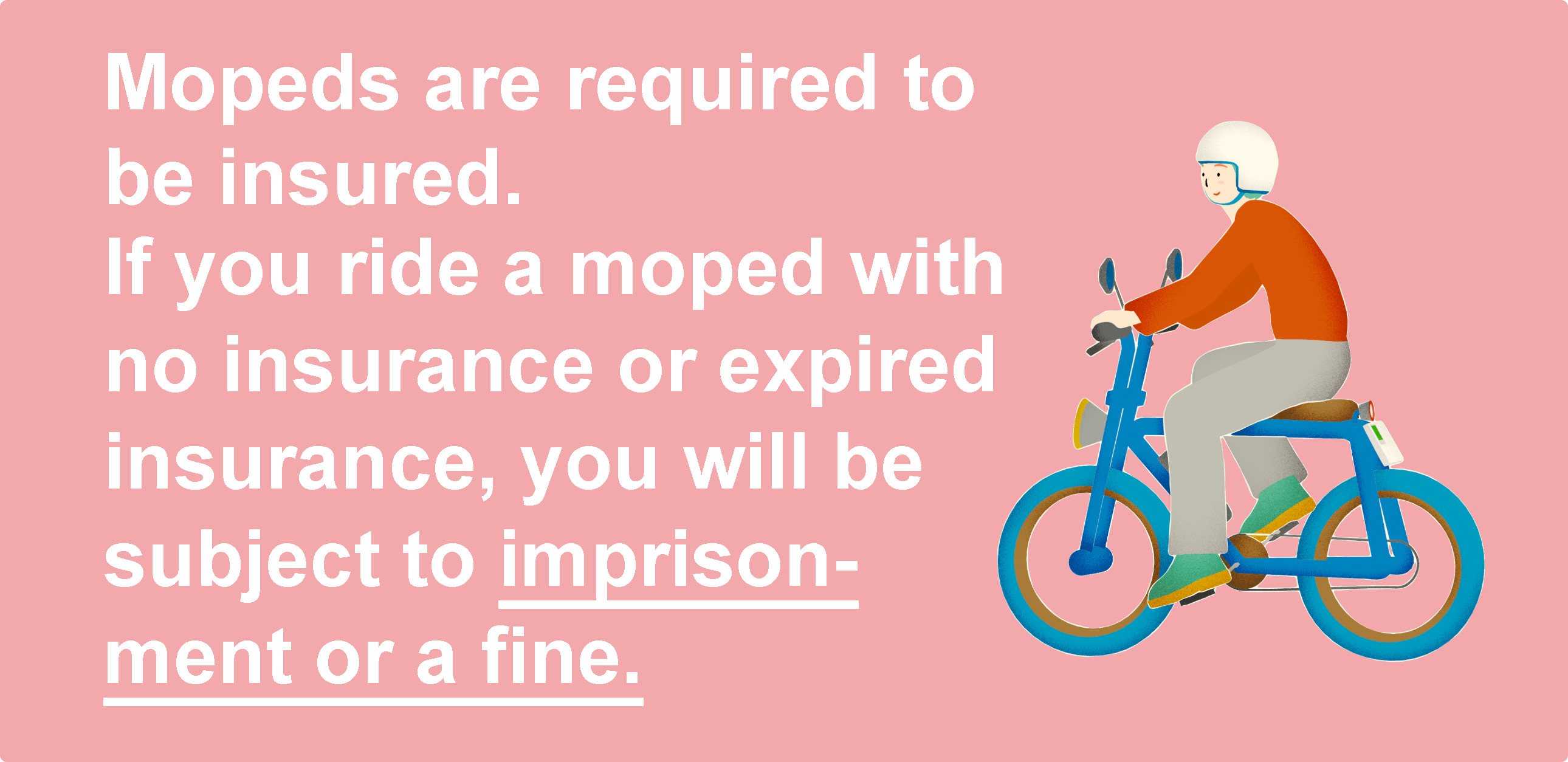
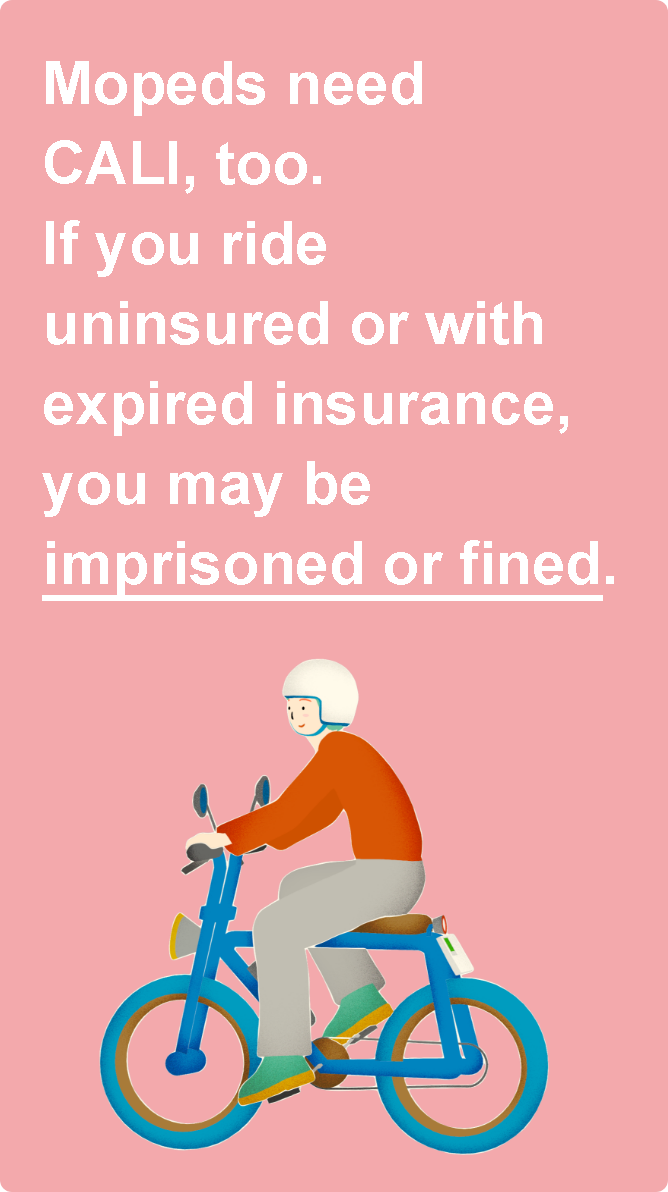
What is a Pedal-Attached Motorized Bicycle (Moped)?
This is a fully electric bicycle / electric bike / pedal-attached motorized bicycle that can run solely on motor power without pedaling.
The vehicle must conform to safety standards in order to travel on public roads.
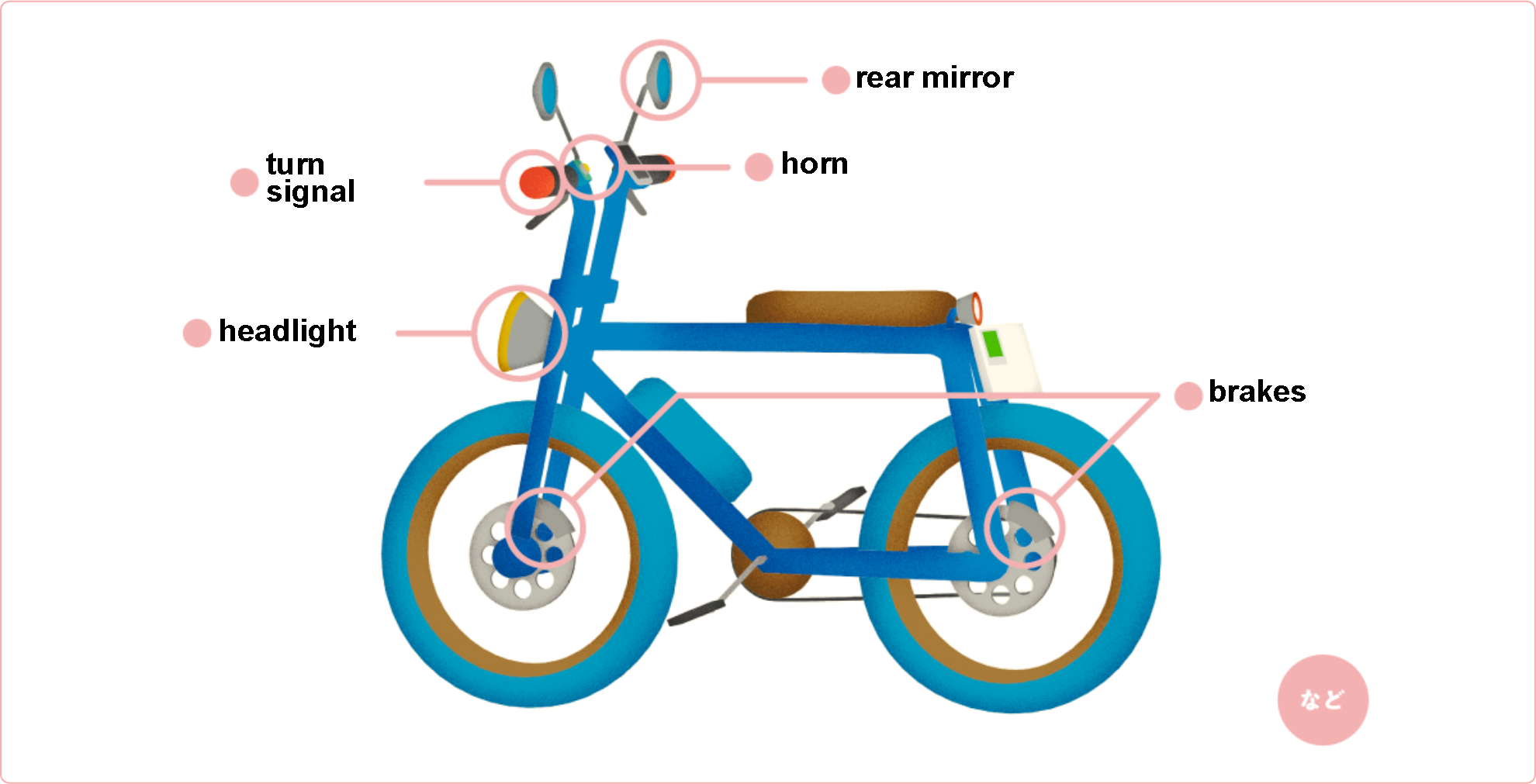
What is CALI (Mutual Insurance)?
The official name for CALI (mutual insurance) is "Automobile Liability Insurance and Mutual Automobile Liability Insurance."
The CALI (mutual insurance) system provides various forms of relief to victims of traffic accidents. These include compensation for damages to the victim from the person who caused the accident (the at-fault party), support for benefits for home nursing care for those who need nursing care in daily living activities such as being bedridden or using a wheelchair, and operation of hospitals specializing in treatment for people with severe residual disabilities.
CALI (mutual insurance) is compulsory insurance (mutual insurance) that must be purchased. All motor vehicles (including motorized bicycles and electric scooters / kickboards, etc.) are required to have CALI (mutual insurance).
The following penalties will be imposed on drivers who have not subscribed to or have not renewed their CALI (mutual insurance).
・Imprisonment of up to 1 year or a fine of up to 500,000 yen
・Six penalty points (license suspension)
Compensation by CALI
The maximum amount of payment for compensation for damages covered by CALI (mutual insurance) is as follows per victim of an accident.
- Damages for death:
- Up to 30 million yen
- Damages for residual disability:
- Maximum 40 million yen to 750,000 yen (depending on the grade of residual disability)*.
- Damages for injury
- Up to 1.2 million yen
- *If the patient is left with significant disabilities in the nervous system, mental or thoracic and abdominal organs and requires nursing care:
Constant nursing care: 40 million yen (Grade 1), occasional nursing care: 30 million yen (Grade 2) - *Residual disability other than the above
30 million yen (Class 1) to 750,000 yen (Class 14)
If there are multiple victims in one accident, the above payment limits are set for each victim individually.
Property damage accidents are not covered.
How to Enroll in CALI
and Mutual Insurance
CALI (mutual insurance) is handled by branches of non-life insurance companies (mutual insurance associations), as well as by car and motorcycle dealers and other agents. Motorcycles of 250 cc or less (light motorcycles, mopeds), etc., can be insured at some convenience stores, post offices, and over the internet.
CALI (mutual insurance) premiums vary depending on your location and vehicle classification. For details, please contact your non-life insurance company, mutual insurance association, or agent, etc.
CALI (mutual insurance) has an expiration date.
Check your CALI sticker for the year and month of expiration,
Please update us when you renew your insurance.
Riding without renewing your insurance is punishable.
Note: The color of the sticker depends on the year in which the term expires.
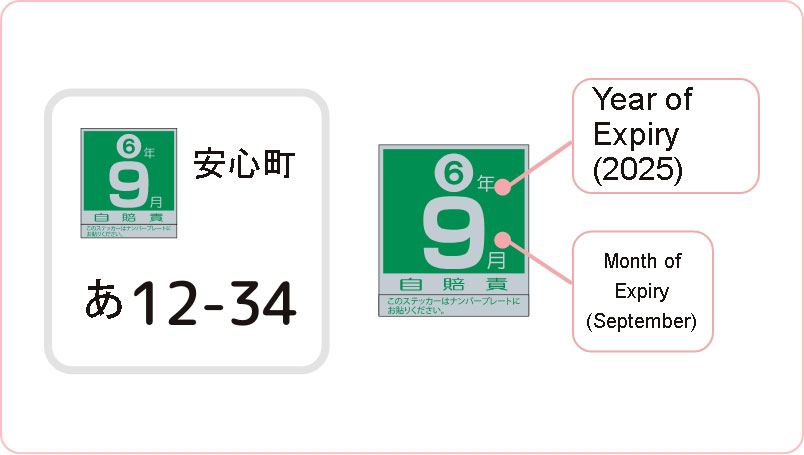
Please use this information to ease your
concerns and for support.
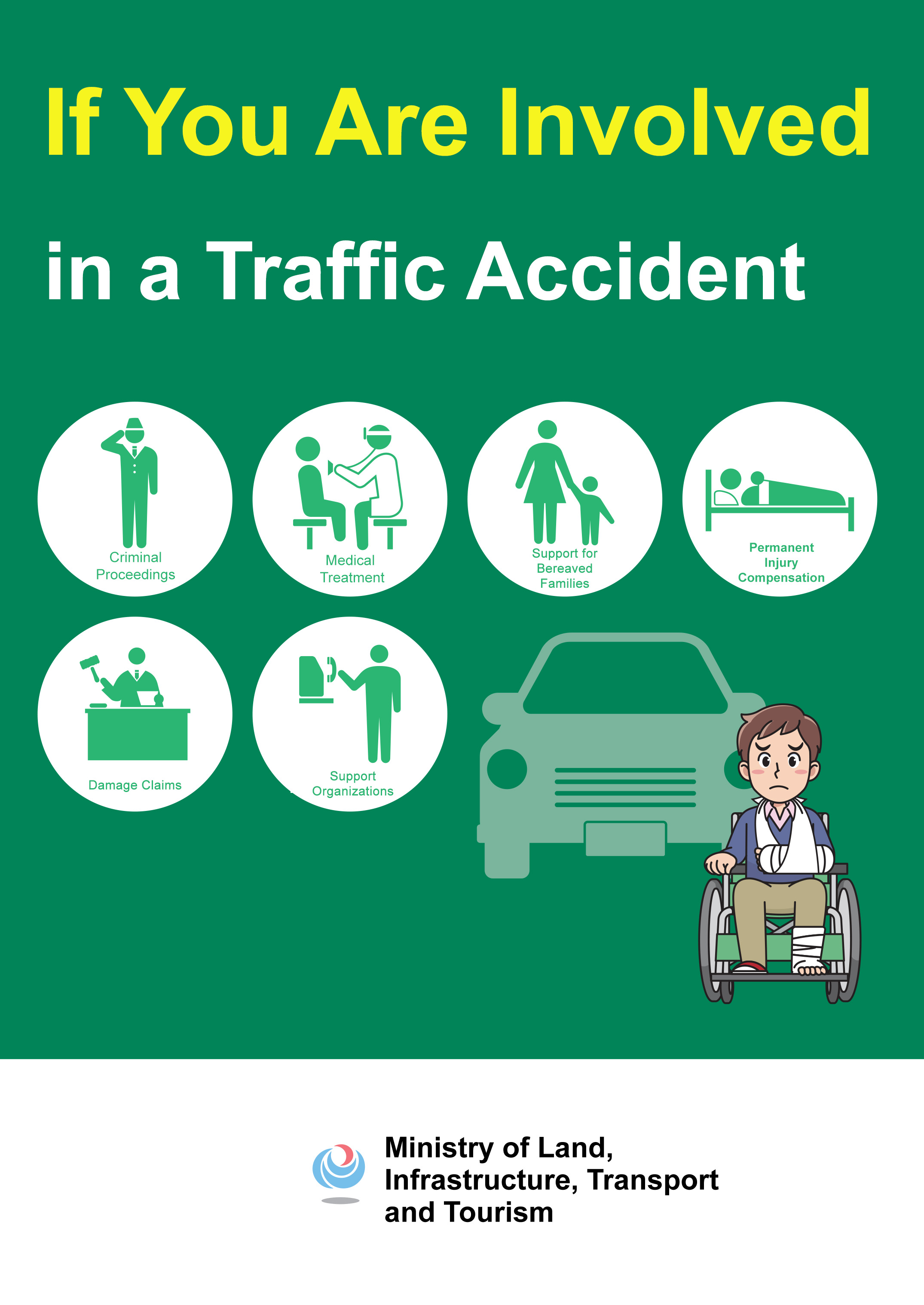
If You Are Involved in a Traffic Accident
The Ministry of Land, Infrastructure, Transport and Tourism (MLIT) has prepared a pamphlet titled "If You Are Involved in a Traffic Accident." This pamphlet informs and guides people who have been involved in a traffic accident about various systems and procedures. The challenges you face due to a sudden traffic accident will change over time. Please use the information in this pamphlet according to your situation at the time.
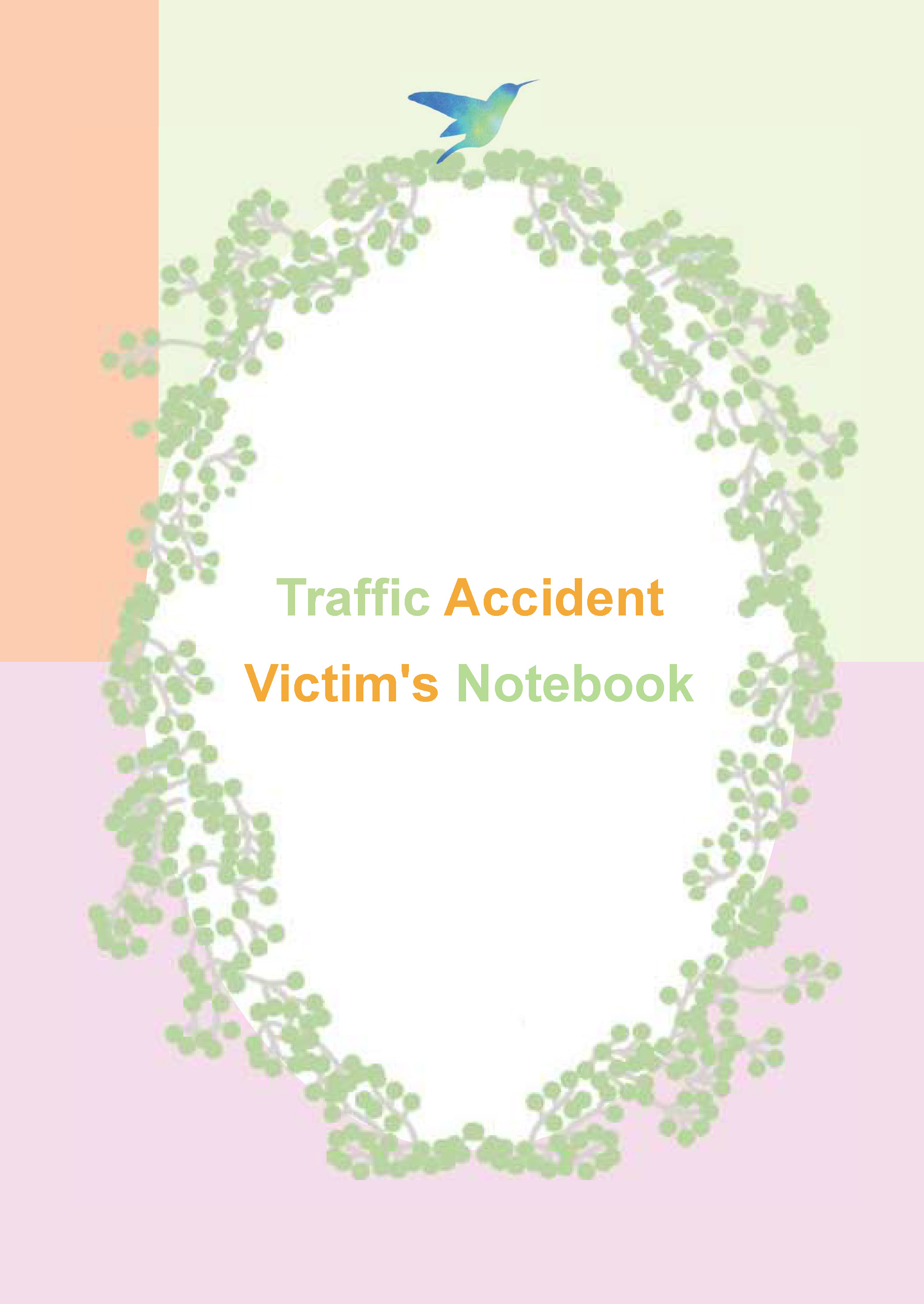
Traffic Accident Victim's Notebook
MLIT has created the “Traffic Accident Victim's Notebook” with the hope of providing support to automobile accident victims. The notebook allows victims and their families to record accident details and provides information about support systems available through police, local governments, and private victim support organizations. We also hope that it will provide support to all accident victims, and help to ease their concerns.